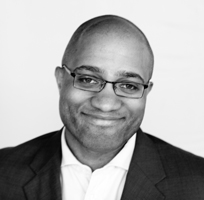
In September 2008, Google co-founder Sergey Brin decided to tell the world about a problem he’d been grappling with for some time. Back in 2006, he served as one of the alpha testers for the personal genetics company, 23andMe. After submitting his DNA for analysis, he learned he had a genetic mutation known to occur in people with Parkinson’s disease. Brin then began a quest to learn about the disease. Knowing that his research couldn’t be kept secret for long, he launched a blog in September 2008 with a post titled “LRRK2.” A mutation of this gene occurs in some people with Parkinson’s.
As Brin searched for more information on the disease, he became frustrated with the pace of research. Why does it take years for helpful medical information to emerge? There had to be a better way. Others agreed with Brin and began to use a range of techniques to accelerate medical research, including crowdsourcing, or the act of tapping the mass mind for solutions to difficult problems, often using Web 2.0 platforms. As a result, scientists at 23andMe have accelerated Parkinson’s research, conducting medical studies in months that ordinarily take years to complete.
Spurred by the rise of technologies like wikis that enable people to quickly collaborate and develop content, a range of organizations as diverse as Harvard University, Humana, Eli Lilly and Company and PatientsLikeMe have embraced crowdsourcing in recent years. They are using it to shape product development and understand the real-world impact of prescription medicines.
Although crowdsourcing’s popularity is growing in the health industry, communicators in other industries have been slow to embrace this powerful idea generation and innovation strategy. Why? Many are unfamiliar with crowdsourcing strategies. Fortunately, this is beginning to change.
This summer, a diverse range of professionals have come together to learn collaborative health communications skills in a program (http://unniched.com) launched by my firm. In addition, they will apply these skills while crowdsourcing solutions to a real-world communications problem faced by the health nonprofit, Lung Cancer Alliance.
Attendees will use and apply a model designed to help individuals working in PR (and other disciplines) apply crowdsourcing techniques to solve difficult communications problems.
Here are some steps gleaned from the first two phases of the model (People and Design):
â–¶ Phase I: Open Your Mind.
Effective and crowdsourcing requires actively soliciting and applying ideas from a diverse range of people. This is harder than it may seem: In PR and marketing, many are wedded to the idea that their experience and education have taught them the best ways to solve a communications problem. Ideas from people not in the field are often dismissed as irrelevant or ill-informed.
Organizations and individuals can break down these destructive attitudes by:
• Being Open: Use social technologies and networking tools to increase exposure to new ideas and perspectives on how to tackle common communications problems.
• Absorbing Lessons: Think critically about how people in other industry segments have successfully changed attitudes and behaviors.
• Sharing: Freely exchange insights and information.
â–¶ Phase II: Commit to a Collaborative Design Process. After communicators have committed themselves to change, they are ready to move to the next stage of the model— design. This is the crux of any crowdsourcing effort—soliciting solutions and shaping them into viable initiatives. This involves:
• Forming a diverse team of people from within and outside the organization.
• Conducting formative research to understand what media channels customers and other stakeholders are using. This can be done by examining research from organizations like the Pew Internet and American Life Project and mining social media conversations.
• Engaging in tests to understand how people will experience and move through the initiative at various points.
• Providing constructive criticism of ideas (after they are fleshed out) to ensure they are truly meeting objectives.
Over the years, I’ve witnessed the benefits of crowdsourcing for organizations large and small. The technique should be a no-brainer for PR professionals. Success requires a willingness to expand one’s perspective, engaging in aggressive collaboration and embracing creative diversity. PRN
CONTACT:
Fard Johnmar is founder of health communications consultancy Enspektos. He can be reached at [email protected].
